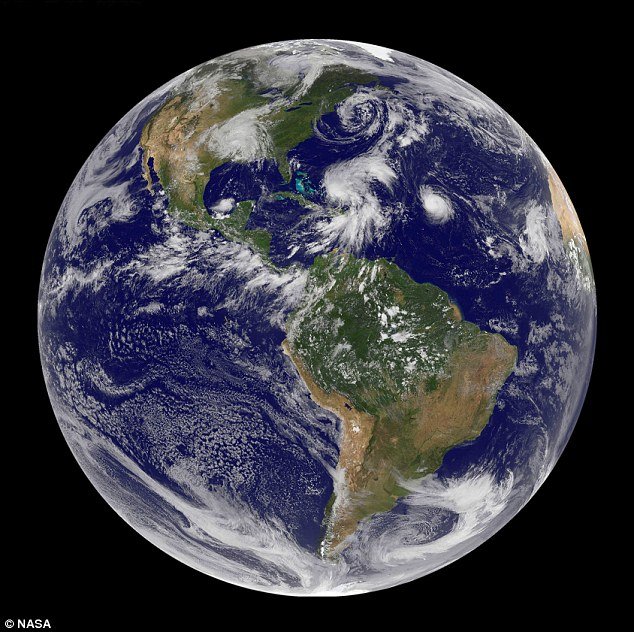To many people, the Earth is just this big mass of rock where they are born, run the affairs of their life and will die on. However, when viewed from space, the Earth is actually a beautiful, blue spherical sphere which hosts trillions of life forms. The larger percentage of these inhabitants are grateful inhabitants who care for their home while some [some newly evolved arrivals who I'm deciding not to name ] are in the act of constantly trying to destroy this beautiful rock. However, I'm not talking about this ungrateful inhabitants today, instead, I'll be stating some facts about this beautiful rock we call home.
The Earth's Profile
Equatorial Diameter: 12,756 km
Polar Diameter: 12,714 km
Mass: 5.97 x 10^24 kg
Moons: 1 (The Moon)
Orbit Distance: 149,598,262 km (1 AU)
Orbit Period: 365.26 days
Surface Temperature: -88 to 58°C
Facts About The Earth
1]The Earth is the densest planet in the Solar System.
This varies according to the part of the planet; for example, the metallic core is denser than the crust. The average density of the Earth is approximately 5.52 grams per cubic centimetre.
2]The Earth has a powerful magnetic field.
This phenomenon is caused by the nickel-iron core of the planet, coupled with its rapid rotation. This field protects the Earth from the effects of solar wind.
3]The Earth’s rotation is gradually slowing.
This deceleration is happening almost imperceptibly, at approximately 17 milliseconds per hundred years, although the rate at which it occurs is not perfectly uniform. This has the effect of lengthening our days, but it happens so slowly that it could be as much as 140 million years before the length of a day will have increased to 25 hours.
4]Earth is the only planet not named after a god.
The other seven planets in our solar system are all named after Roman gods or goddesses. Although only Mercury, Venus, Mars, Jupiter and Saturn were named during ancient times, because they were visible to the naked eye, the Roman method of naming planets was retained after the discovery of Uranus and Neptune.
5]The Earth has 1 moon and 2 co-orbital satellites
As you’re probably aware, Earth has 1 moon (The Moon). But did you know there are 2 additional asteroids locked into a co-orbital orbits with Earth? They’re called 3753 Cruithne and 2002 AA29. We won’t go into too much detail about the Moon, I’m sure you’ve heard all about it.
3753 Cruithne is 5 km across, and sometimes called Earth’s second moon. It does not actually orbit the Earth, but has a synchronized orbit with our home planet. It has an orbit that makes it look like it’s following the Earth in orbit, but it’s actually following its own, distinct path around the Sun.
2002 AA29 is only 60 meters across, and makes a horseshoe orbit around the Earth that brings it close to the planet every 95 years. In about 600 years, it will appear to circle Earth in a quasi-satellite orbit. Scientists have suggested that it might make a good target for a space exploration mission.
6]Only 3% water of the earth is fresh, rest 97% salted. Of that 3%, over 2% is frozen in ice sheets and glaciers. Means less than 1% fresh water is found in lakes, rivers and underground.
Hi! I am a robot. I just upvoted you! I found similar content that readers might be interested in:
http://space-facts.com/earth/